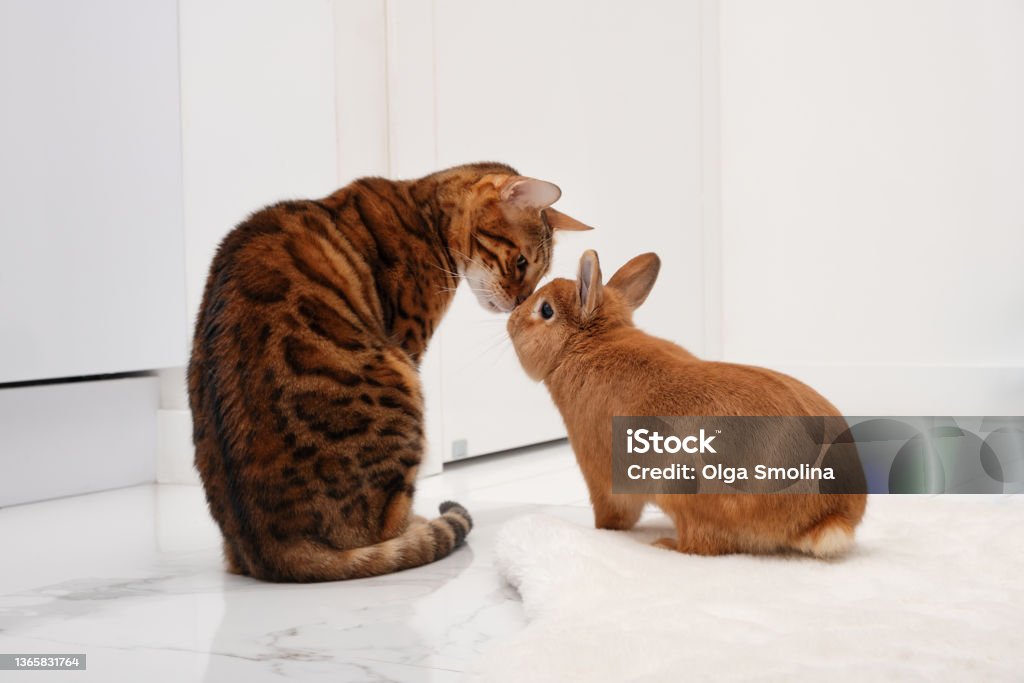Can Rabbits & Cats Live Together?

Below we will talk about:
- Natural Instincts
- What Makes a Good Match?
- Safe Introduction Steps
- Safety Tips
- Common Mistakes to Avoid
- Signs of Trouble
Understanding Natural Instincts
What Makes a Good Match?
Safe Introductions
The key to helping cats and rabbits get along is taking things slowly. Start by keeping them in separate rooms so they can get used to each other’s sounds and smells without any direct contact. Swap blankets, toys, or bedding between them so they begin to associate the other’s scent with something familiar and safe.
When both animals seem calm, begin short “meet and greet” sessions through a barrier like an exercise pen, baby gate, or carrier. Keep these interactions brief and positive, rewarding calm behavior with treats. If that goes well, move on to short, supervised visits in a safe space where your rabbit has places to hide and your cat cannot corner or chase them.
Over time, you can slowly increase the length of these sessions, but always watch body language closely and be ready to step in if either animal shows signs of stress. Even after they seem comfortable, continue supervising for weeks or months before ever considering leaving them alone together. A slow introduction is the safest path to a peaceful relationship.
Introduction Safety Checklist:
☑ Start in separate spaces.
☑ Swap scents before any meeting.
☑ Begin with barriers (x-pen or pet gate).
☑ Keep visits short and calm.
☑ Slowly increase time together.
☑ Offer treats as a reward for calm interactions.
☑ Never leave them unsupervised.
Safety Tips
-
Give your rabbit hideouts the cat can’t access.
-
Trim the cat’s nails regularly.
-
Avoid introduction when the cat is in a high-play or hunting mood.
-
Always have escape routes for the rabbit.
-
Watch for body language changes — intervene early.
Common Mistakes
🚫 Letting pets “work it out” without supervision.
🚫 Rushing introductions.
🚫 Assuming a friendly cat will automatically accept a rabbit.
🚫 Ignoring stress signs like hiding, freezing, or stalking.
Signs of Trouble
If you see these signs, separate immediately and go back a step in the introduction process.
Cat Warning Signs:
-
Stalking or crouching low
-
Fixated staring
-
Twitching tail tip
-
Pouncing
Rabbit Warning Signs:
-
Thumping or bolting away
-
Staying frozen or hidden
-
Rapid breathing
